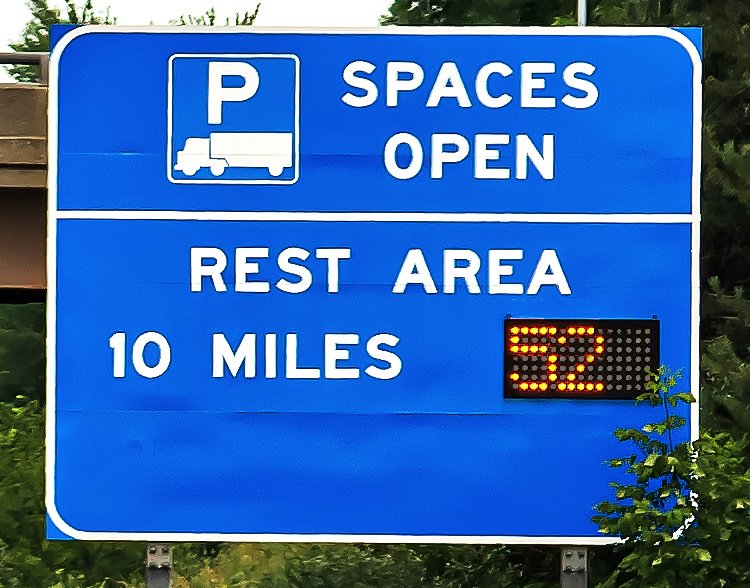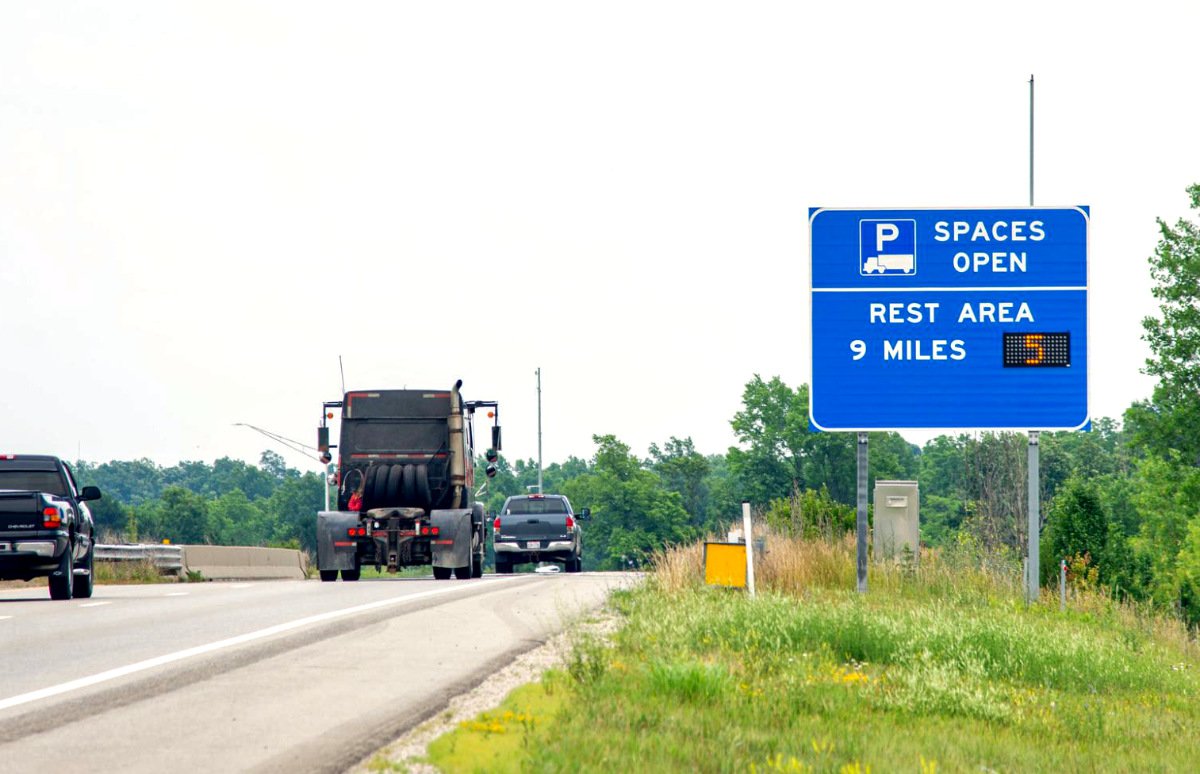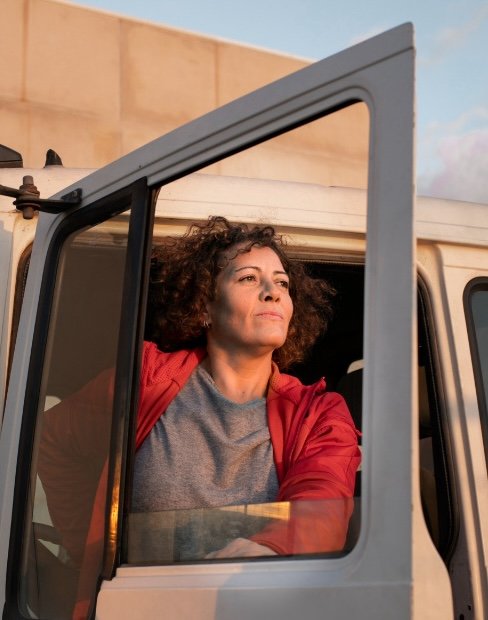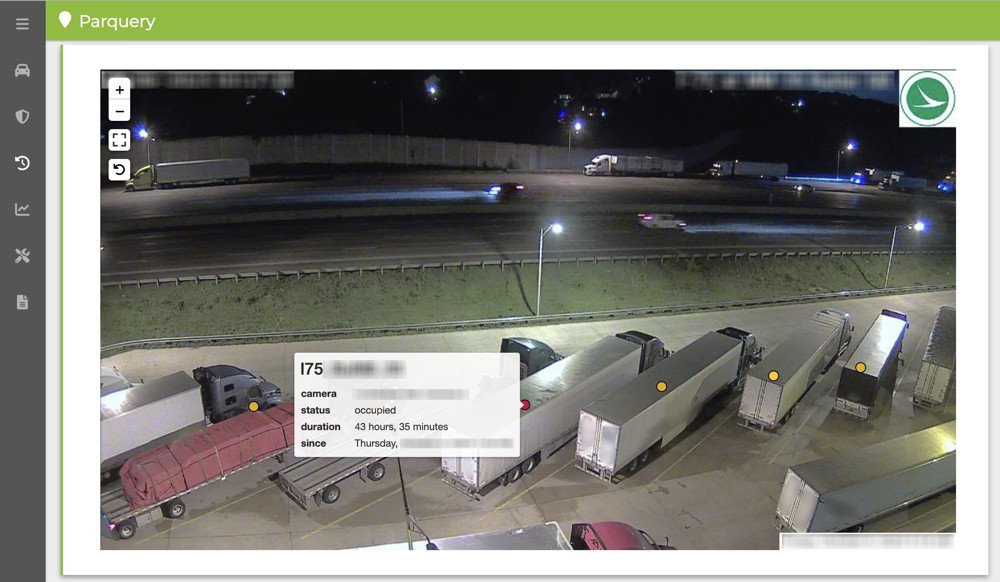Partners in the Spotlight
Selected integrations
AXIS ACAP - Parquery in-camera
Fotokite - Parking & Traffic Surveys
Parquery works with ANY camera
In 2020, truck drivers ranked parking as the foremost issue affecting the trucking industry.

Image by Freepik
Getting adequate rest is essential for truck drivers, particularly long-haul carriers, who spend their days concentrated at the wheel. Road safety and their own and others’ well-being depend on it.
Drivers also depend on rest areas to wait before scheduled pick-up and delivery, called staging. It is a direct result of shippers and receivers permitting truck access within set time frames only, penalties for delays, and congested roads.
Yet, as transportation demands rise, finding suitable rest areas with parking spots grows ever tougher. "Truck drivers can only drive for so long before they're legally required to take a break and the [digital parking guidance] signs help them make their decision where they're going to rest," says Andrew Hunt of the ODOT Office of Traffic Operations.

The Ohio Department of Transportation (ODOT) in the north-eastern US state of Ohio solves this by using Parquery's smart parking solution to direct truckers to available spots, ensuring safe rest stops.
Just using our existing camera infrastructure at the 16 rest areas to provide significantly more accurate occupancy data compared to in-pavement sensors. And it is also significantly cheaper than maintaining the in-pavement sensors, close to an 11th of the cost. It was a huge cost savings [of about 91%].

Get truck drivers the rest they need: Guide drivers in real-time to a vacant space and distribute vehicles across the available rest areas

Ohio is located at the crossroads of major transportation routes and is within a day's drive of over half the population of the US and Canada. A radius of just 600 miles contains major cities like Chicago, Detroit, Toronto, Philadelphia, and New York City. This has made the state a central hub connecting the Great Lakes, East Coast, and Midwest regions, creating high demand on its road.
The government agency ODOT operates and maintains the highway infrastructure, manages traffic flows with smart devices such as traffic signals, message signs, and cameras. In particular, ODOT manages all rest areas along the highways, which are most convenient for drivers, because they do not have to leave the highways.
It is something the trucking industry wanted and needed. There's limited truck parking availability and we want to give the truck drivers ample notice to make a decision. They see the signs across the highways and they can see ‘Hey this rest area up ahead is full. I need to make other arrangements.’
ODOT needs accurate and reliable real-time parking information for truck drivers, both for road safety and infrastructure upkeep. If drivers do not find suitable parking spaces, they are forced to continue driving while fatigued or to stop elsewhere. This jeopardizes safety for the drivers themselves and other road users. Besides, heavy trucks damage infrastructure not intended for parking, such as shoulder strips, ramps, local roads or passenger car parking, thus multiplying maintenance costs.
Between 2015 and 2019, Ohio had
- 106 crashes that involved trucks parked in undesignated locations. They led to 5 deaths, 11 severe and 36 minor injuries.
- 460 truck crashes due to fatigue, leading to 6 deaths, 50 serious injuries and more than 400 minor or possible injuries.
The pressing issues in truck parking and who else relies on Parquery’s smart truck parking solution to solve them.
About three to four years ago, ODOT installed truck parking information management system signs and conventional ground or in-pavement sensors across the state. The upfront cost was tremendous, with at least two sensors needed for each stall, and the operating and maintenance costs were significant. Most importantly, ODOT were not satisfied with neither their reliability nor their accuracy.
These sensors are battery-powered and they weren't all that reliable either. The maintenance was a fairly significant cost for detection that wasn't very good [...]. So, the accuracy of the sensors was pretty bad.
In order to replace the failing and inaccurate ground or in-pavement only four years after installing them, they were looking for alternative solutions and found Parquery. “We were trying to find something that works with Milestone because all these truck parking locations also have cameras. And we thought, this is something that video analytics could do,”explains Andrew Hunt of the ODOT Office of Traffic Operations.
Who else relies on Parquery’s smart truck parking? Find out

Milestone is the leading provider of Video Management Systems (VMS) and offers solutions for video surveillance, security and business optimisation. Parquery is a certified technology partner of Milestone and we integrate our solutions directly into the Milestone platform. Our Smart Parking Plugin allows the Milestone to seamlessly provide parking management data.
Transform existing cameras into parking sensors and direct drivers to a vacant spot in real-time

ODOT’s rest areas were already equipped with CCTV cameras to ensure everyone’s safety while they rest. Therefore, it was easy, quick, cost-effective and risk-free to launch a pilot project to trial Parquery's solution before rolling it out to all rest areas.
The camera images are analyzed on Parquery’s cloud servers to determine which parking spots are vacant or occupied and for how long. This information is relayed in real-time to about 50 digital signs along the highways across the state that notify drivers of the availability of the upcoming rest stops.
We started a pilot project using our public cameras. After we determined that this data from Parquery is accurate, we decided to transition away from the in-pavement sensors, and use video analytics all together.

Digital signs along the roads notify truckers of parking availability and allow them to plan ahead.
On the groundwork of the pilot project’s success, the solution was launched within a few months in the entire Ohio highway network. ODOT now monitors 16 rest areas on the key interstate highways I-70 and I-75 that cut across the state east-west and north-south with Parquery.
In addition to the road-side signs, the data is also posted to Ohio's real-time traffic website, www.ohgo.com, and displayed on in-vehicle truck information systems. Integrating the occupancy data into the traffic management system with Parquery's API was straightforward:
We’re taking [Parquery's] data feed from the API and posting that information to 27 of these physical signs along the roadway across the state, [and] on ohgo.com, which is our one stop shop for trucking information. And lastly, it's also going to some in-cab computers.
Truck drivers, and by extension everyone on the road, benefit greatly from the accurate live parking availability data.
Efficient and effective parking guidance exceeding expectations

Image by Freepik
The three main issues with the existing ground sensors were
All of those were solved with switching to Parquery’s camera-based solution.
Just using our existing camera infrastructure [and Parquery] provides significantly more accurate occupancy data compared to in-pavement sensors. Now we do everything – the maintenance of the cameras, communications, and power – in-house and it has led to very significant cost savings.
Andrew Hunt particularly pointed out that “the transition to Parquery was really easy,” and maintenance is much simpler and cheaper. Since the cameras are maintained in-house, no additional external contractor is needed.
We wanted to realize an effective solution to maximize the taxpayer dollars who are paying for everything that we do. We wanted to get the best bang for their buck, so to speak! So that's why we wanted the camera solution.

The dashboard allows the operator to check the cameras, live and past occupancy, enforcement data, statistics and analytics, and configure alarms such as overstaying vehicles.
A feature of Parquery’s solution that was not in the original requirements but proved very valuable, are automatic alerts for vehicles that park long-term. In the past there had been cases of drivers having died in their truck and the vehicle remaining parked for weeks without anyone knowing. “We didn't really have a way of knowing other than, somebody may notice,” Andrew Hunt highlights the problem.

Image by Freepik

Now, email alarms for trucks that have been there for [a certain amount of time] go directly to the state highway patrol so they can go out and perform a welfare check. So that's an additional benefit that wasn't in the original scope of the project, but since that's something that Parquery can do, that's another benefit that we're getting.
Parquery offers custom alerts for overstaying vehicles. Find out more
Companies, municipalities and government authorities in Switzerland, the EU, the USA, and worldwide rely on Parquery to solve their parking problems. Ask for a live demo of our references.
Would you like to use, resell our solution in your market or integrate it into your traffic or smart city platform? Call or email us and let's discuss the details. We work directly with end customers and via resellers.

Our main office is located in Geerenweg 2, CH-8048 Zurich, Switzerland
parking [at] parquery.com
+41 44 501 39 19 (8:30am - 5:30pm CET)
Upon receiving your request, we will get back to you shortly.